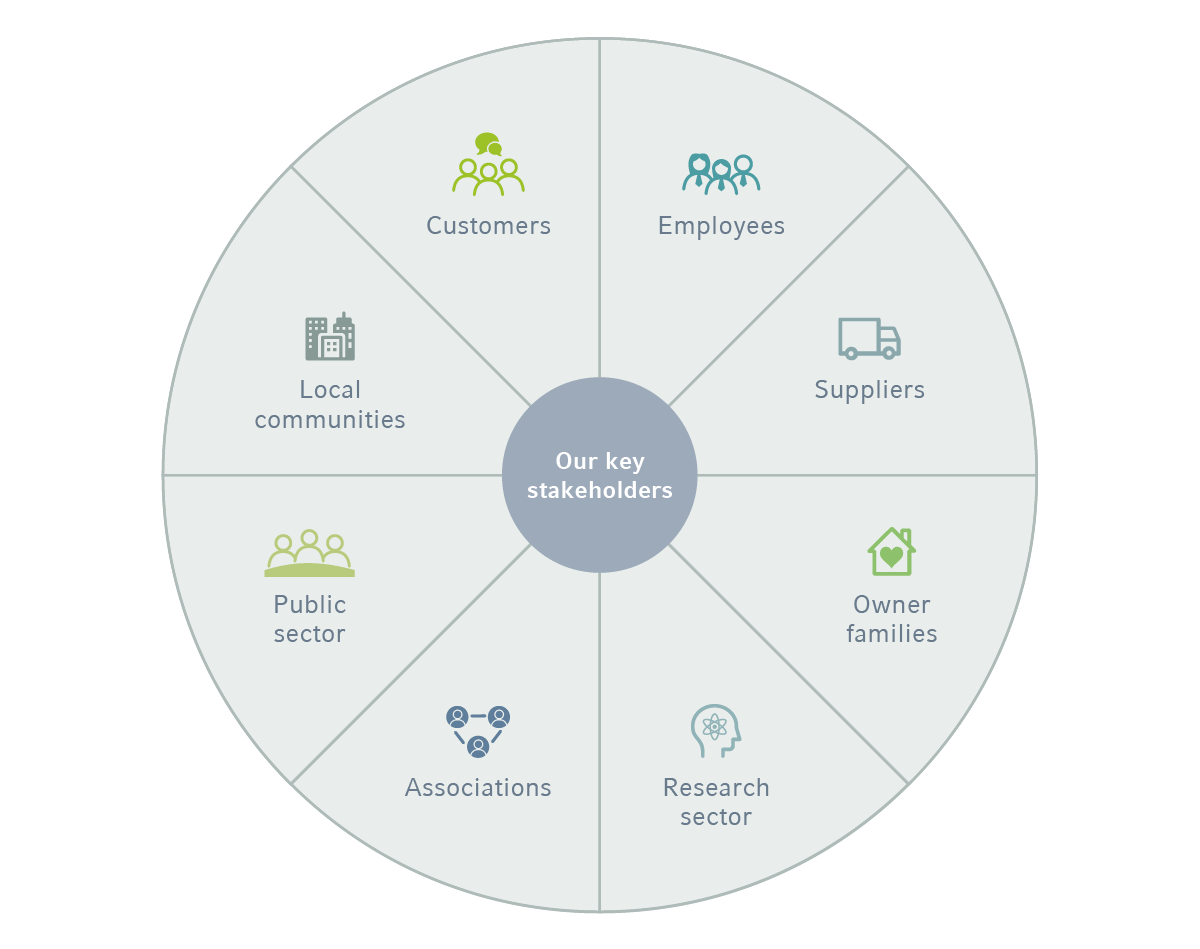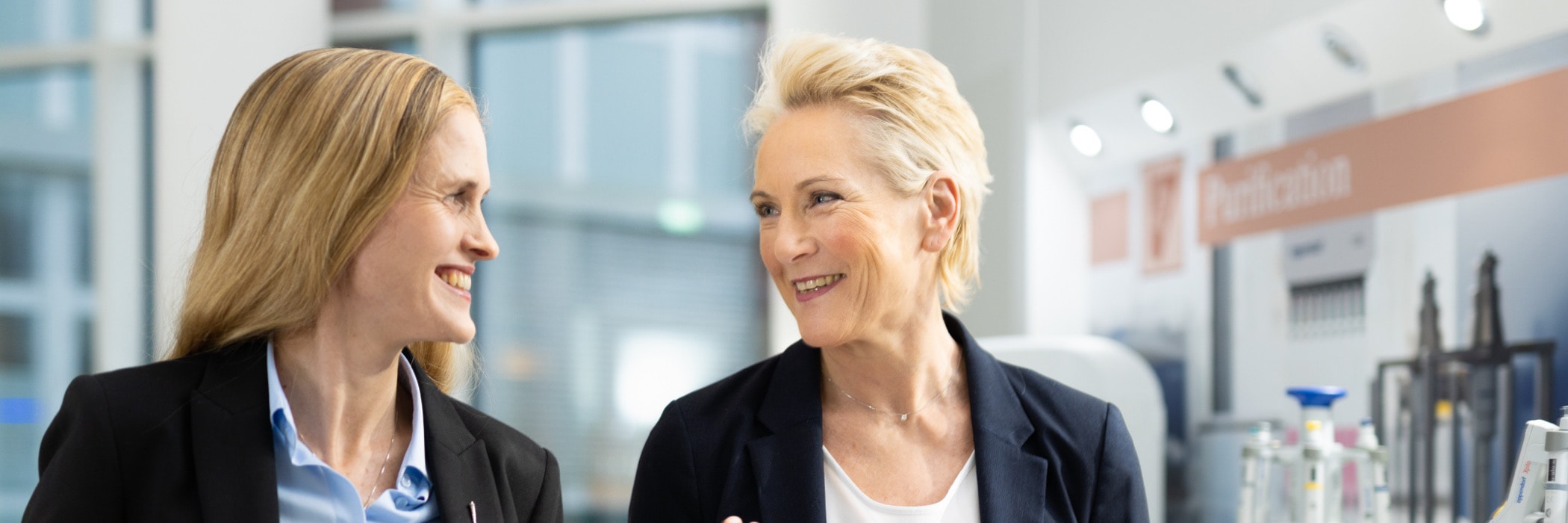
Strategy & Management
“We want Eppendorf to be synonymous with customer-centric processes, innovative technologies, and high-quality products and services to improve human living conditions.” This is how our founders, Dr. Heinrich Netheler and Dr. Hans Hinz, described the company’s purpose back in 1970. The fundamental principle of sustainability has therefore always played a role at our company. Today, our message is a succinct one: “Eppendorf exists to improve human living conditions!” All this time, the thrust of our purpose has remained the same. Within the Eppendorf Group, our goal is to continue to grow and develop so that we do not exceed the bounds of our planet’s resilience now or in the future, and to ensure that our actions are aligned with society’s needs.
Four key issues, eight action fields
GRI 102-40, -42, -43, -44, -46, -47
We believe it is important to put our resources to work where they are most effective in bringing about positive change. For this reason, we have established a strategic process and worked in dialogue with internal and external stakeholders to identify and prioritize the issues and action fields that are key to our sustainable business activities.
As part of this process, we joined forces with select stakeholders to study our company’s environmental and social impacts, and those of our upstream and downstream value chains, and to further sharpen our awareness of sustainability concerns. To this end, we conducted an online survey of approximately 850 employees worldwide and engaged in discussion with customers, suppliers and owners. We also analyzed various quantitative factors, such as the extent of environmental harm we cause (measured according to external costs in euros), as well as the likelihood of causing human rights violations (measured in risk hours). Beyond that, we also modeled energy consumption across the period of time that the Eppendorf product portfolio is in use.
As part of the process, we identified eight key sustainability topics along our value chain. These topics have since served as the action fields for our sustainability activities and reporting. They are divided across four key strategic issues that guide our actions and activities as a responsible company, as further detailed below.
 Climate change
Climate change
We view climate change as one of the greatest challenges of our time. In our role as a highly specialized industrial company, our aim is to harness our potential to ensure that the goal of the Paris Agreement – keeping global warming below 2°C between now and 2100 – can be met. Specifically, we have pledged to achieve climate neutrality within our own operations, and to use our own influence wherever we can to help our customers achieve climate neutrality.
Our customers have also recognized the challenges posed by climate change, and they expect the Eppendorf Group to commit to climate action and to transparent reporting on its carbon footprint. Demand for energy-efficient products and technologies is also rising across the life science sector. According to an impact analysis, our products generate significant carbon emissions during the production and use phases. Now that we are aware of this, it is our ambition to step up our efforts to consider the energy efficiency of our products as early as possible during product development and when planning our production processes.
Our climate action fields:
- Reduce CO2 emissions generated at our own production and administrative sites
- Reduce CO2 emissions arising at the customers’ end as a result of the use of our products
 Natural resources
Natural resources
We firmly believe that the use of natural resources must not exceed the limits of the planet’s resilience and ability to regenerate, and all our actions are guided by this belief. Our customers are committed to reducing resource use wherever possible. For example, their requirements are increasingly stringent when it comes to waste reduction and the ability to reuse and recycle products and packaging. We strive to minimize the volume of resources used wherever possible, for maximum benefit to us and our customers. With this in mind, we focus on efficient or alternative solutions for packaging and consumables, and we introduce recycling and reuse programs where possible. Our goals in the area of resources are partly financially motivated. For example, packaging that is more efficient and saves space and weight can do more than just conserve resources. It also lowers costs. This is another reason why we plan to take on a leading role in the conservation of resources in the life science sector in the future.
Our action fields in the area of natural resources:
- Prevent waste arising at the customers’ end as a result of the use of our consumables
- Minimize waste arising at the customers’ end as a result of the packaging of our products
- Reuse and recycle resources and waste arising from our marketing materials and transportation packaging
 Social compliance
Social compliance
Global value chains are growing more and more complex, resulting in a whole host of challenges. Aspects such as product quality and delivery reliability are traditional hallmarks of our supplier relationships. However, we also believe it is important to keep an eye on the big picture concerning labor conditions and respect for human rights within our supply chain as part of our own responsibilities and to take action where we can, responding appropriately if and when violations occur. Systematic sustainability management for our supply chain is also a necessity if we are to meet the current and future requirements of our customers and regulatory agencies.
Assuming responsibility, particularly for compliance with regulations and standards in the supply chain, also promotes stability. With this in mind, we try to use our specifications and interactions as a way to motivate suppliers to develop responsible solutions for their own processes where possible.
Our action fields in the area of social compliance:
- Ensuring that our suppliers uphold fair labor conditions
 Social well-being
Social well-being
Our customers spend a lot of time performing repetitive activities with one-sided impact on their bodies so that they can drive human progress through their research. With that in mind, we are particularly focused on doing everything we can to facilitate their work by providing the most ergonomically advantageous life science products available on the market. We also believe it goes without saying that our products meet the highest standards of safety in terms of use and transportation.
To be competitive as a global manufacturer of high-quality life science products, we need employees who help us to further develop our business and remain innovative at all times. We have pledged to be the most attractive employer for talent in our industry around the world. At the same time, we are committed to supporting lifelong learning and the growth and development of our existing workforce, harnessing the advantages and possibilities of the shift to new and digital technologies in the process.
We see value in the diversity of our staff. It helps us come up with fresh ideas and reexamine existing patterns and methods. This is why we welcome both the diversity and individuality of our own employees and the wealth of different cultures, worldviews and personal histories they bring with them. Each and every day, they unlock new potential and new opportunities to improve our performance capacity on the market and increase our mutual respect and appreciation.
Our action fields in the area of social well-being:
- Promote the safety and health of our customers during the use of our products
- Ensure diversity and equality of opportunity at our sites and lifelong learning in the digital age
Overview of sustainability strategy & sustainability reporting
Download(XLS, 45 KB)
| Relevance within the value chain | |||||
|---|---|---|---|---|---|
| Action fields | Upstream | At Eppendorf | Downstream | Key reporting topics & relevant GRI indicators |
Report section |
| Reduce CO2 emissions generated at our own production and administrative sites | Emissions: GRI 302-1, 305-1, -2, -3 |
Energy & Emissions | |||
| Reduce CO2 emissions arising at the customers’ end as a result of the use of our products | Emissions: GRI 302-1, 305-1, -2, -3 |
Energy & Emissions | |||
| Prevent waste arising at the customers’ end as a result of the use of our consumables | Resource use & waste GRI 301-1 |
Environment & Resources | |||
| Minimize waste arising at the customers’ end as a result of the packaging of our products | Resource use & waste GRI 306-1, -2, -3 |
Environment & Resources | |||
| Reuse and recycle resources and waste arising from our marketing materials and transportation packaging | Resource use & waste GRI 306-1, -2, -3 |
Environment & Resources | |||
| Ensure that our suppliers uphold fair labor conditions | Labor conditions at suppliers' sites GRI 308-1, GRI 407-1, 408-1, 409-1, 414-1 |
Responsibility in the Supply Chain | |||
| Promote the safety and health of our customers during the use of our products | Customer safety and health GRI 416-1 |
Customer Safety & Health | |||
| Ensure diversity and equality of opportunity at our sites and lifelong learning in the digital age | Diversity and equality of opportunityTraining and continuing education GRI 405-1, 404-3 |
Employees | |||
Establishing sustainability as an integral part of the organization
To ensure that we make progress in our four key strategic issues and eight action fields, we have established an overarching organizational structure based on defined responsibilities and obligations. The structure starts with the top level of management and is then broken down within the organization as needed.
Each member of the Management Board is in charge of one of our four key strategic issues:

Social Well-Being
Eva van Pelt
Co-CEO & Chief Commercial Officer
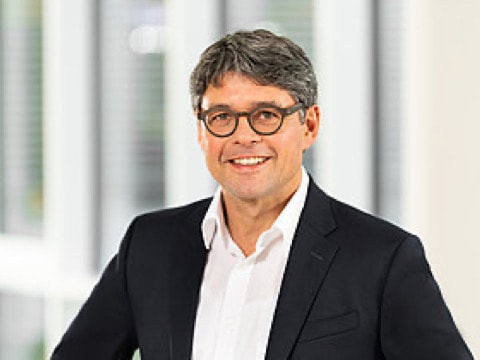
Natural Resources
Dr. Peter Fruhstorfer
Co-CEO & Chief Business Officer
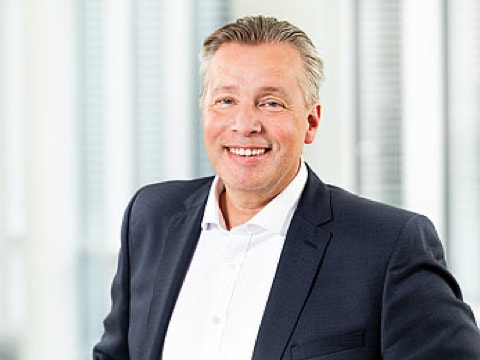
Climate Change
Axel Jaeger
Chief Financial Officer
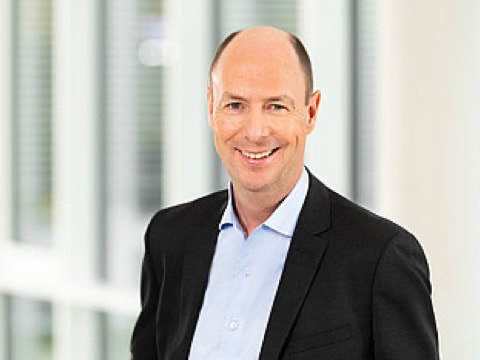
Social Compliance
Dr. Wilhelm Plüster
Chief Technology Officer
Co-CEO & Chief Commercial Officer Eva van Pelt bears overall responsibility for the productive implementation of the strategy and for developing appropriate governance structures with an eye to sustainability. Within her corporate unit, a sustainability team within the Sustainability & Health, Safety, Environment department works continuously on strategic and operational implementation.
The Sustainability & Health, Safety, Environment department at Eppendorf provides technical and professional advice and partners with others to generate new ideas. It coordinates the development of targets, measures and sustainability performance indicators along with the establishment of relevant control mechanisms. The department is responsible for ongoing monitoring of all key issues and for reporting to the Management Board. The team also oversees external reporting according to acknowledged standards and frameworks. Experts from the individual departments develop concrete measures relating to our eight action fields.
Guiding principles & standards
GRI 102-11, -12, -16
Everything we do is based on high ethical standards and values. This stance is also reflected in our Code of Conduct, which applies to all employees of the Eppendorf Group. It sets out fundamentals of how to deal with topics such as safety, health and the environment. The code obligates our employees to respect the rights and diversity of their individual work colleagues and to grant equal opportunities to all staff members and everyone who applies to work at our company. In addition, the code includes rules for topics such as bribery, conflicts of interest and confidentiality. Our efforts send a clear signal that the quality of the transaction, expert advice and fair dealings with each other are always paramount within the relationships between Eppendorf and its business partners. The Code of Conduct also specifies how violations are to be reported so that we can take corrective action immediately if a problem is identified.
In all our activities, we also embrace the precautionary principle, striving to take precautions to prevent or mitigate any and all conceivable adverse impacts on the environment or human health. The same principle also underlies our Environmental Policy, which sets out our requirements for environmental protection and the protection of health and occupational and process safety. It guides us in various factors, such as careful handling of hazardous materials and water pollutants, and sets rules for safe storage of these substances.
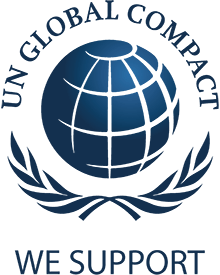
To underscore the strength of our commitment to sustainability, we signed the UN Global Compact in January 2022. The Global Compact is viewed as the world’s largest and most important initiative for responsible corporate governance. Participating companies voluntarily pledge to observe ten principles across the domains of human rights, labor standards, environmental protection and the fight against corruption, all based on key UN conventions. Participants are obligated to report annually on their progress in their own spheres of action. From now on, this sustainability report will serve as a progress report for the UN Global Compact.
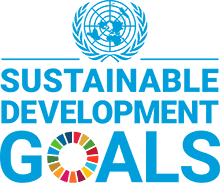
The 17 United Nations Sustainable Development Goals (SDGsSDGsThe 17 Sustainable Development Goals (SDGs) are goals established by the United Nations to ensure sustainable development at the economic, social and environmental levels worldwide.) also guide us in our actions geared toward sustainability. We recognize the SDGs in full as a shared blueprint for peace and prosperity for people and the planet. After all, the business world – with its innovative drive and power to invest – will have to play a crucial role if we are to meet these targets.

